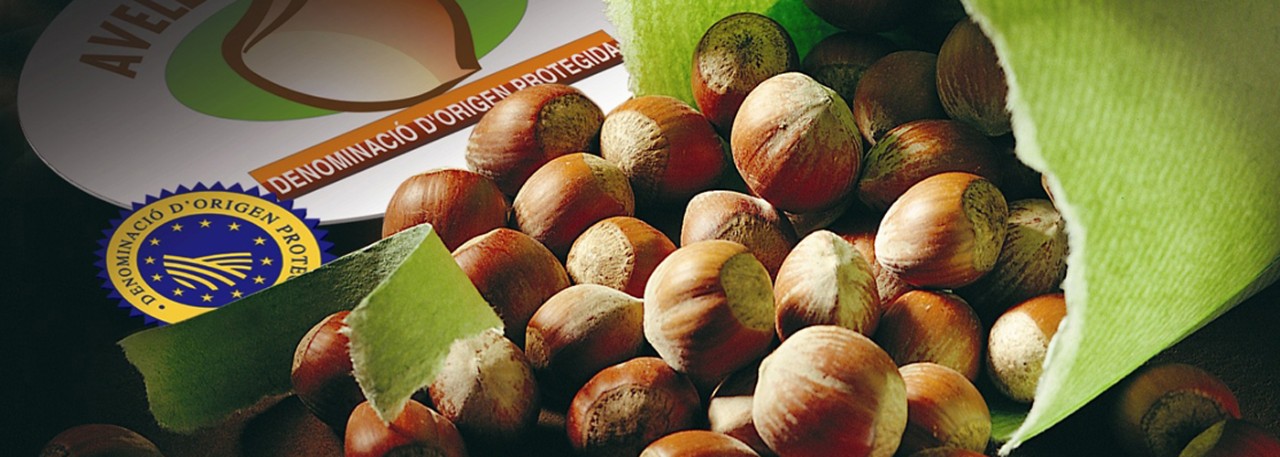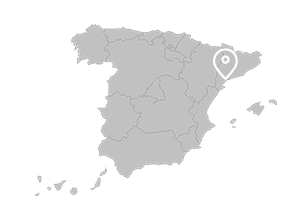.png.transform/rendition-xs/image_image%20(1).png)
Avellana de Reus PDO
Kernel of the fruit of the hazel (Corylus avellana L and Corylus máxima Mill), a member of the Betulaceae family.
Tasting notes
The hazelnut has its own characteristic flavor profile. It should have neither unusual flavors nor rancid aromas.
Other notes
The fruit has a green outside husk, or woody epicarp, which comes loose when the fruit ripens. Inside is a hard shell or pericarp which normally contains one seed, the hazelnut. The PDO hazelnuts comes in three presentations:
-In the shell: this is the nut as it is harvested, without removing the shell. Sizing is based on the maximum diameter of the equatorial cross-section and is carried out using screens with round holes. There are two types:
Very large: diameter of 18 mm / 0.6 in or over.
Large: diameter of 16 mm / 0.7 in or over.
-Whole nut, also called shelled hazelnuts or filberts. These are the whole nuts without the shell. Sizing is based on the diameter of the equatorial cross-section of the nut, and is carried out using screens with round holes.
-Roasted hazelnuts: these are in-shell or whole hazelnuts that have been roasted. They are presented by size.
Both whole and roasted hazelnuts must have a minimum diameter of 11 mm.
Average nutritional breakdown of raw hazelnuts is 15.5% protein, 62.2% lipids, 15.5% carbohydrates and 6.3% water.
Production / Processing method
The Negreta variety has a plant density on irrigated land of 6-7 m x 3-3.5 m (19.6-22.9x 9.8-11.4 ft), for single-stem plants, and 6-7 m x 5 m (19.6-22.9x16.4 ft) for four-stem plants. In dry farming, the density is 6-7 m x 5-6 m (19.6-22.9x16.4-19.6 ft), for four-stem plants. The more vigorous Gironella and Pautet varieties are only grown on irrigated land. In single-stem orchards, density is 7-7.5 m x 3.5-4.5 m (22.9-24.6x11.4-14.7 ft); for four-stem orchards, it is 8-9 m x 6 m.
Harvesting takes place when the fruit is ripe and must be done with maximum care and speed to guarantee quality and preservation. On the most modern orchards, harvesters are used to lift the hazelnuts from the ground.
After harvesting, the hazelnuts are first cleaned, removing any leaves, stones, dirt, etc. They are then separated as in-shell nuts or as whole nuts to be shelled. For roasted hazelnuts, the nuts are shelled and sized before roasting, which takes place in ovens in which the temperature and roasting speed can be carefully controlled. Other factors for achieving different degrees of roasting are moisture content and the size of the hourly batches. The roasted hazelnuts are then cooled and the skins are removed.
The product is then packed, ensuring that the containers have the right weight, contain no foreign matter and comply with all the regulations. The last stage is labelling.
Geography / Relief and climate
The altitude in this area ranges from almost sea level to 1,000 m (3,280 ft). The relief is irregular, with limey, fairly deep soils with a loose, silty texture, brown to reddish or ocher in color, coming from well-weathered parent rock.
The climate is Mediterranean, with mild temperatures and strong north-west winds in February and March which assist in pollination. Average annual rainfall reaches 400 to 500 mm (15.74-19.68 in). Minimum temperatures may be as low as -5º C (23ª F), with an annual average of 16º C (60.8º F).
Regulatory Council
Consejo Regulador de la DOP Avellana de Reus
Passeig Sunyer, 4-6. 1º
43202 Reus (Tarragona)
Tel: (+34) 977 328 103
info@avellanadereus.cat
www.avellanadereus.cat
Sources:
- Spanish Ministry of Agriculture
Average nutritional breakdown of raw hazelnuts is 15.5% protein, 62.2% lipids, 15.5% carbohydrates and 6.3% water.


- Avellana de Reus 1
- Avellana de Reus 2

Reus (Catalonia)
